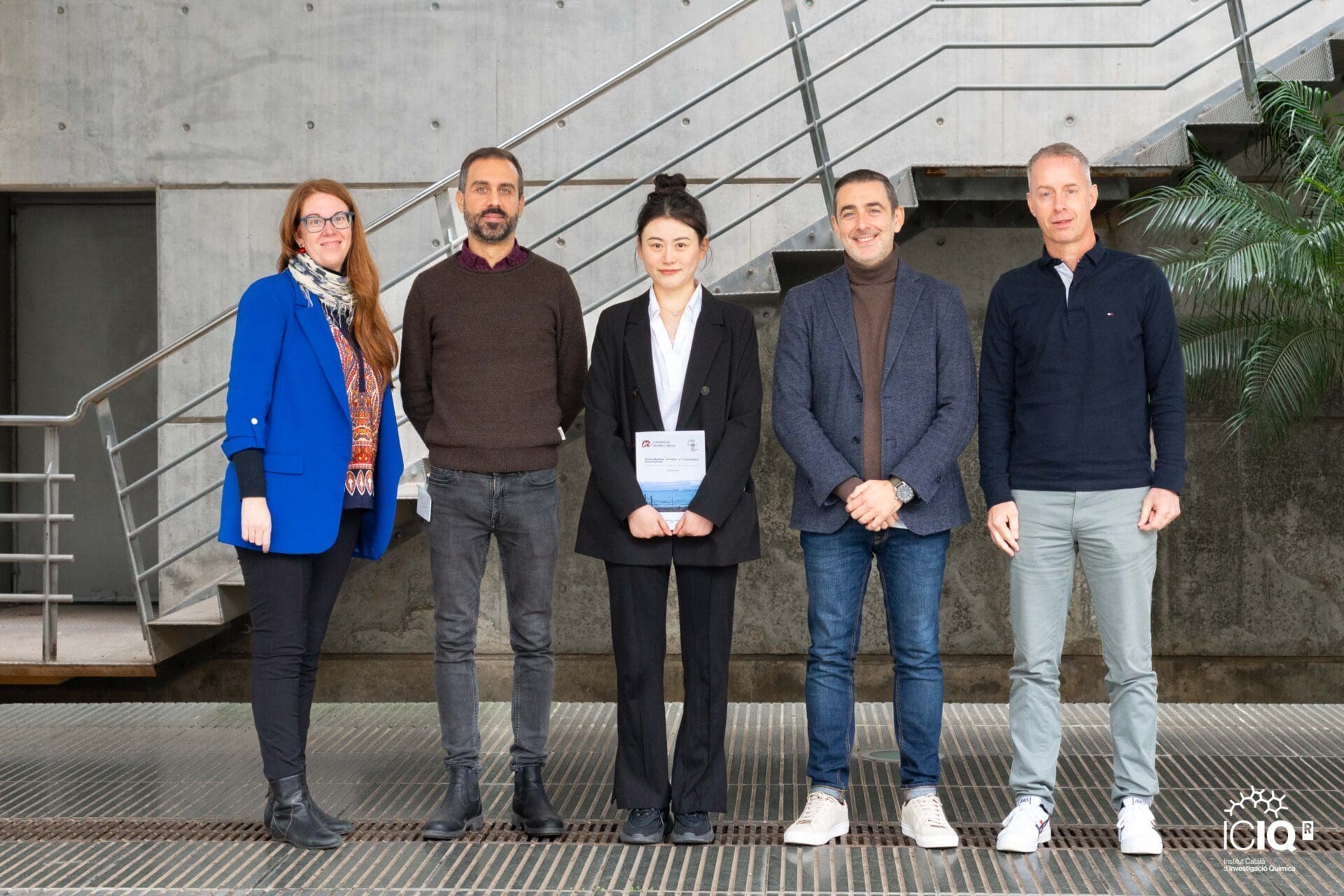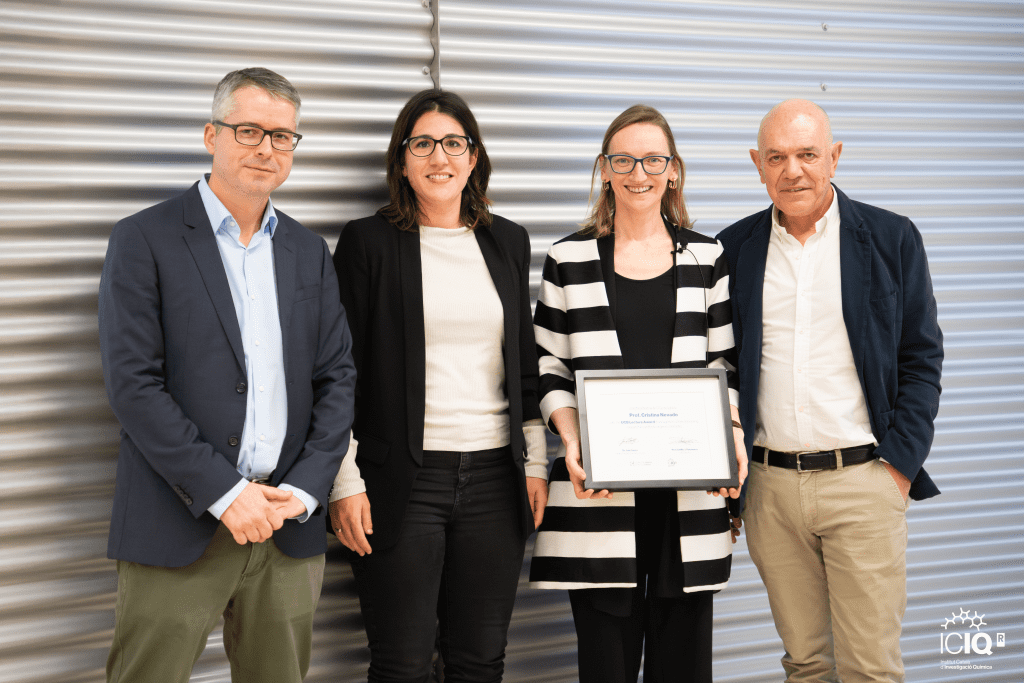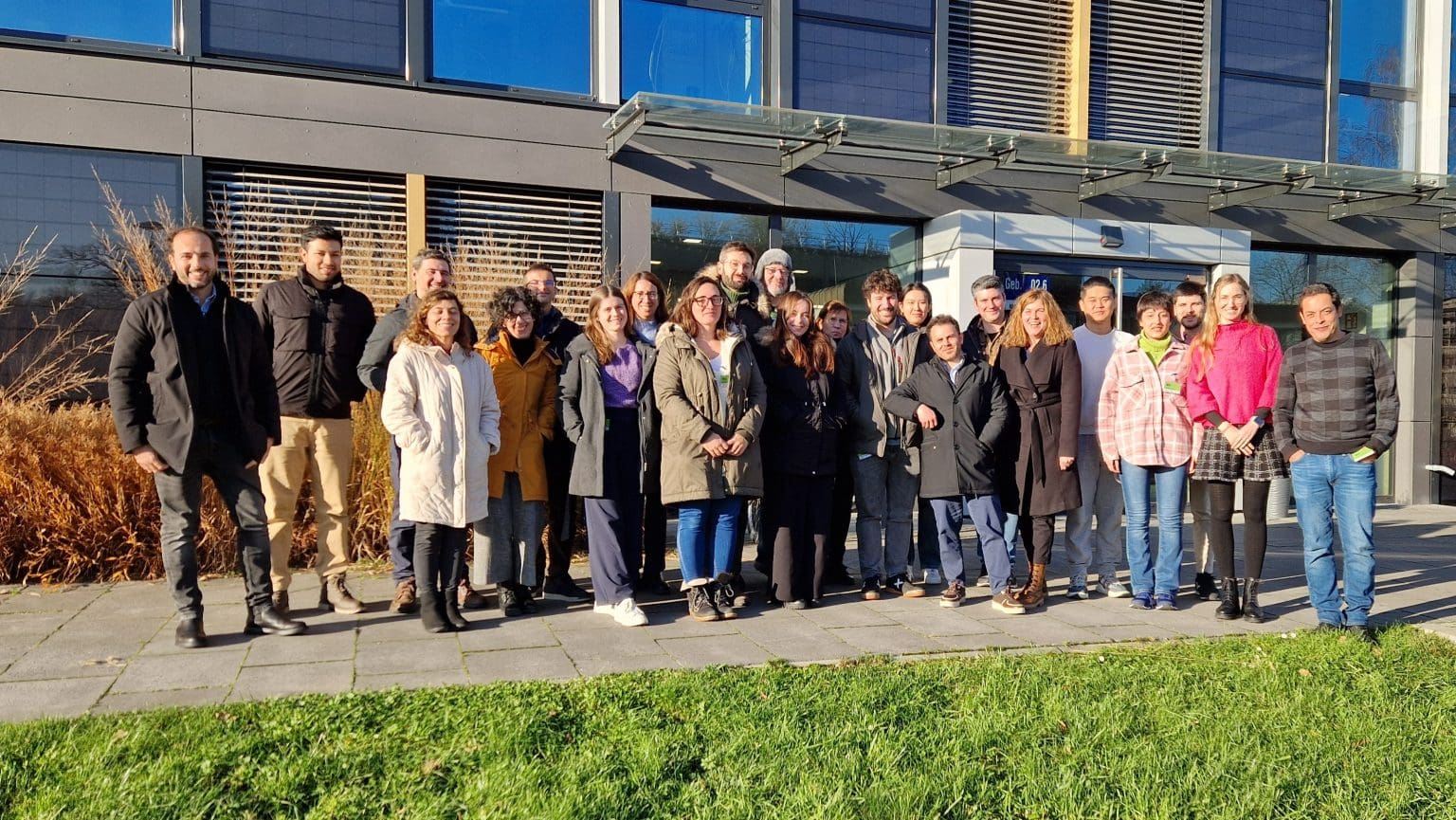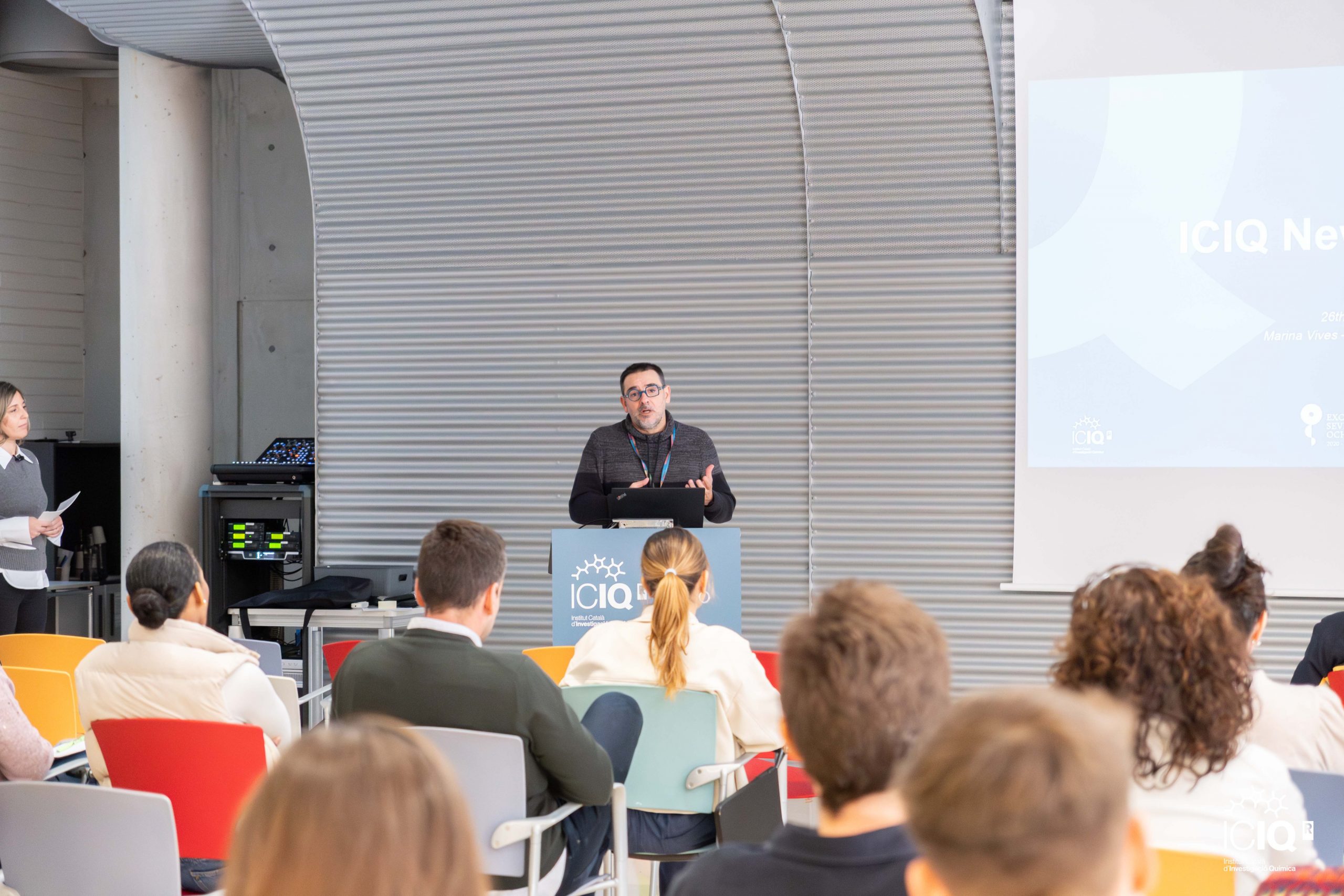Three ICIQ group leaders - two JACS articles
This week sees two JACS publications by three ICIQ group leaders and their research teams.
The first article entitled ‘Diastereodivergent Asymmetric Sulfa-Michael Additions of α-Branched Enones using a Single Chiral Organic Catalyst‘ is the result of a successful collaboration of Urakawa‘s and Melchiorre‘s research groups.In this paper, α,β-disubstituted unsaturated ketones succumb, for the first time, to a catalytic asymmetric approach.
By carefully choosing acidic additives and reaction media they can switch the enforced sense of diastereo-induction of the catalyst, in this case a cinchona-based primary amine, to obtain either the syn or anti product with high enantioselectivity. Find out how to ‘control’ the stereochemistry of the products here:
By carefully choosing acidic additives and reaction media they can switch the enforced sense of diastereo-induction of the catalyst, in this case a cinchona-based primary amine, to obtain either the syn or anti product with high enantioselectivity. Find out how to ‘control’ the stereochemistry of the products here:
Diastereodivergent Asymmetric Sulfa-Michael Additions of α-Branched Enones using a Single Chiral Organic Catalyst
Xu Tian, Carlo Cassani, Yankai Liu, Antonio Moran, Atsushi Urakawa, Patrizia Galzerano, Elena Arceo, and Paolo Melchiorre*
J. Am. Chem. Soc., 2011, 133 (44), pp 17934–17941
JACS also publishes Piet van Leeuwen‘s new method of creating libraries of bidentate chiral diphosphines by in-situ mixing of three ingredients: a Ti alkoxide precursor, a chiral diol and the ditopic ligands that carry the phosphine functionality.
This way they synthesised 100 new bidentate chiral diphosphines. The chirality stems from the chiral diol at the top of the molecule and it is transduced all the way down the molecule over 10 bonds or more.
They use this library of diphosphines for Rh-catalysed asymmetric hydrogenation obtaining ee’s of up to 92%.Enantioselective Supramolecular Catalysis Induced by Remote Chiral Diols
Piet W. N. M. van Leeuwen*, David Rivillo, Matthieu Raynal, and Zoraida Freixa
J. Am. Chem. Soc., Article ASAP
DOI: 10.1021/ja207912d
This way they synthesised 100 new bidentate chiral diphosphines. The chirality stems from the chiral diol at the top of the molecule and it is transduced all the way down the molecule over 10 bonds or more.
They use this library of diphosphines for Rh-catalysed asymmetric hydrogenation obtaining ee’s of up to 92%.Enantioselective Supramolecular Catalysis Induced by Remote Chiral Diols
Piet W. N. M. van Leeuwen*, David Rivillo, Matthieu Raynal, and Zoraida Freixa
J. Am. Chem. Soc., Article ASAP
DOI: 10.1021/ja207912d
Related news

Let's create a brighter future
Join our team to work with renowned researchers, tackle groundbreaking
projects and contribute to meaningful scientific advancements






 11-12-2024
11-12-2024 


















